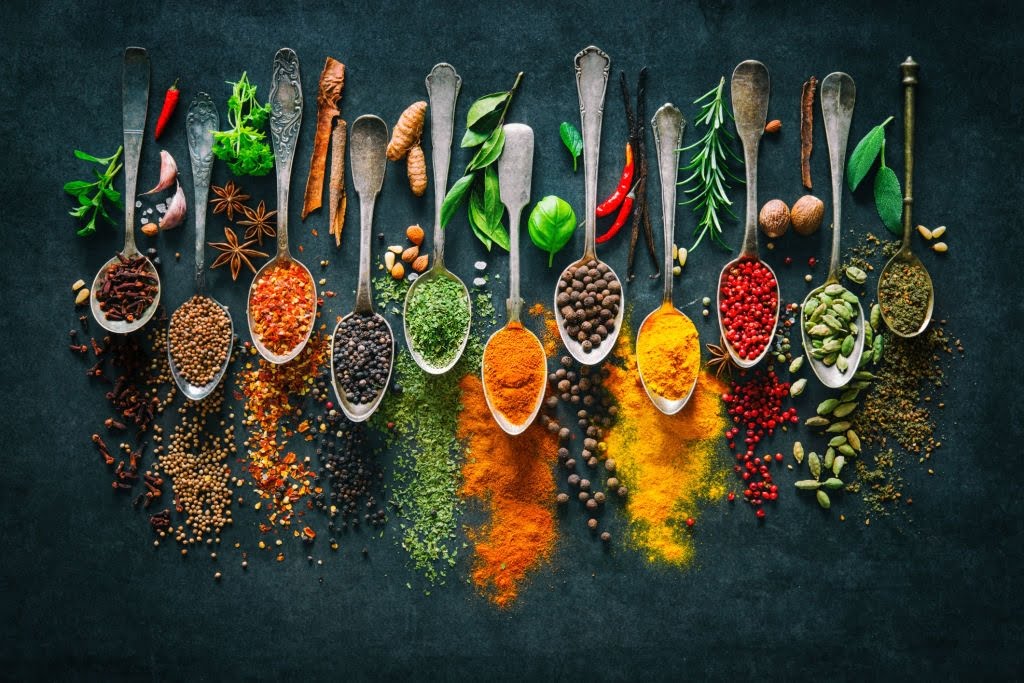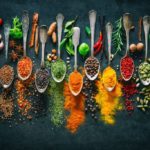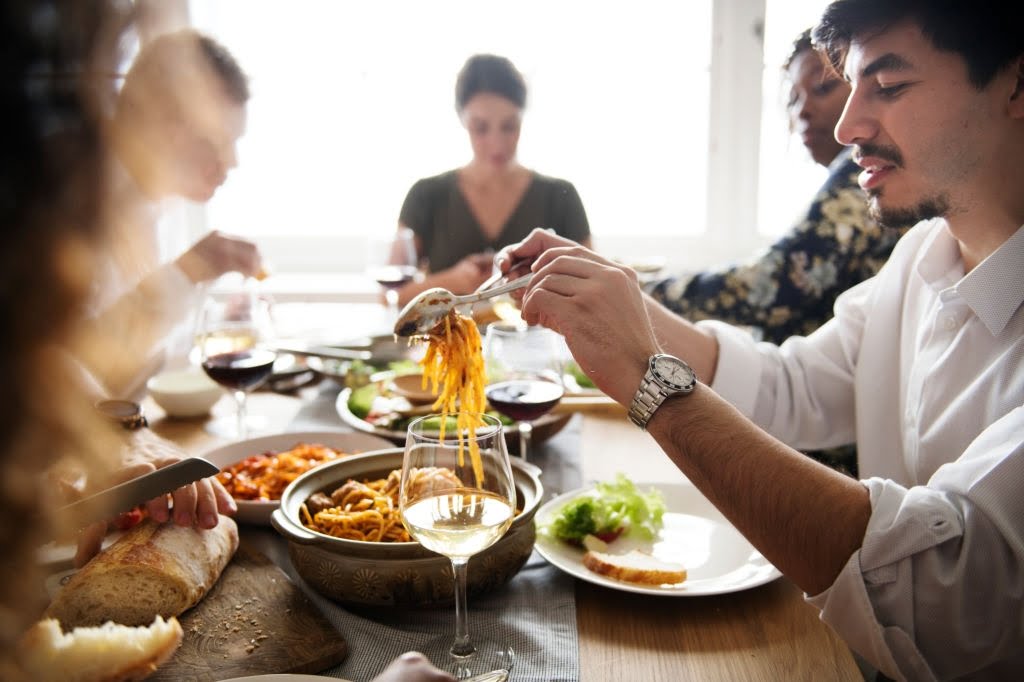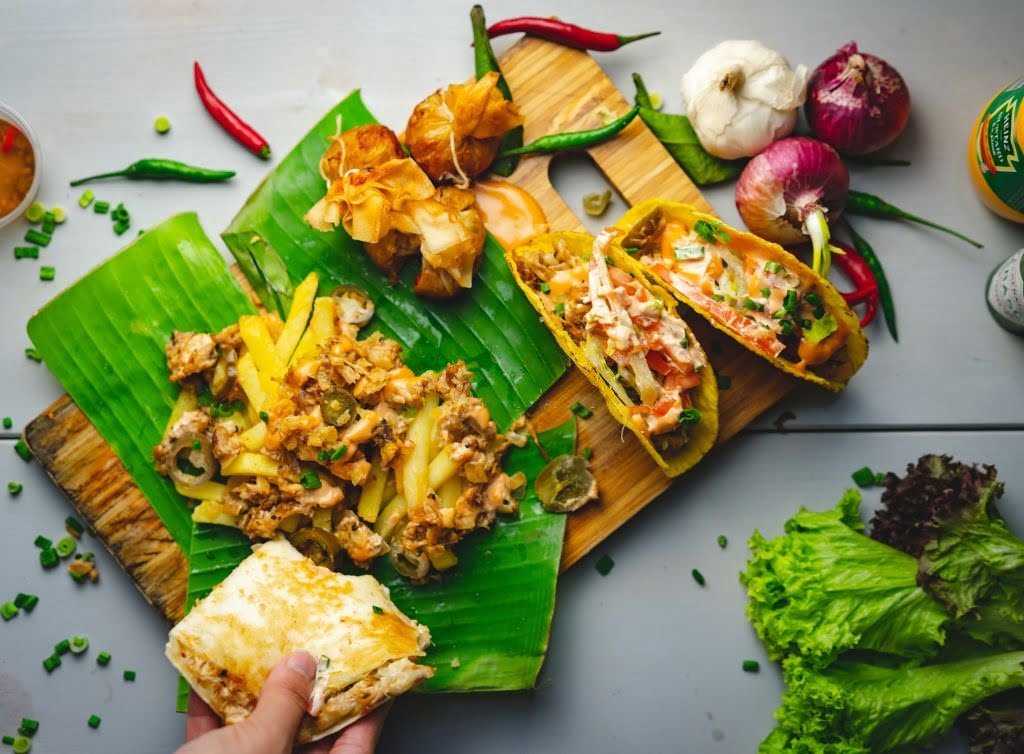Food in Human Culture

Food is a very important thing in human cultures. It is very diverse and shares a lot of history and tradition. In this paper, you will find out how food gets intertwined with human culture, how different food is shared between cultures, and lastly how food became so popular in different cultures. Food for some is an emotional turning point as for others, food is something that is heavily depended on. Different ethnic cultures have diversity on how food is made, prepared, and what the ingredients are. Back in the old days, cooking was different and the resources that were used to cook were very different compared to the way how things are now. Recipes are passed down from generation to generation. Children grow up to see their parents cook to then do what their parents make. Culture is a widespread tradition where there are tons of varieties. When you are born, you are automatically born into a culture based on your ethnic background.
People often ask what is culture? People have also questioned how is culture broken down, Culture itself is the customs, arts, social institutions, and achievements by a specific group of people or societal groups. Many cultures date back as early as the Mesopotamian civilization, which dated back to the 4th century BC. From there, there has been a wide diversity between cultures. Human culture starts from home and the things that have been passed down by family or people closest to you. Many cultures share the same concept but switch it up. Food cultures deal with spices that they grew up on and the national dishes that are served. For example, Puerto Ricans use a lot of rice, and plantains and Caribbeans have a lot of seasonings. The idea of society as the whole way or structure of thought for the human group was a specific thought shared primarily by anthropologists until the later half of the 20th century. This examination has increased over 50 years.
In Mesopotamian culture, they had a polytheistic belief system. They developed traditions, festivals, ceremonies, rituals in marriage and death, etc.. Dieting was a big part of Mesopotamian culture. In their culture, livestock animals and fertile crescent were a part of their daily diet. Barley was used heavily in Mesopotamian food; beer and water were also included. Grains were very important and essential to the Mesopotamian diet. Grains such as wheat, lentils, chickpeas, beans, onions, and garlic, etc. A variety of herbs and spices were mostly homegrown and used in the home. Cooking was done in an oven or hot ashes. The meat was roasted, grilled, or boiled. From there many people started to take the idea of cooking and make their recipes up. As civilization started to modernize, people from different places started to put their ideas and twist into food. This was the start of diversity not only with food but how civilization was becoming better as they adapted to their environment. The resources that they were provided with used it to cook and survive. In Hispanic culture, food is a very big tradition that many Hispanics celebrate. Tortilla shells and soft shells are stuffed with assorted meats, varieties of cheese, seafood, and vegetables. Because all these ingredients are combined together it makes it a very popular dish. Ropa vieja consists of shredded beef and vegetables. Traditionally this is one of the national cuisines in Cuba. Those cuisines are also popular in Puerto Rico and the Caribbean. Enchiladas are made with cheese and can be served with meats and vegetables. Hispanic food has a lot of components that a lot of other ethnicities use. Chicken fajita is a Texan-Mexican food and is popular in the United States. It is made with grilled skirt steak and can also be made with chicken and shrimp. This dish can be served with charred peppers, onions, and toppings such as lettuce, guacamole, diced tomatoes, and cheese. Paella is a rice-based dish that originated in Valencia, Spain. It is often served with seafood and combined with rice that’s seasoned, seafood that’s been steamed, assorted meats along with herbs and beans. Ceviche de Camarones is shrimp which is prepared with shrimp in lemon juice, minced onion, diced tomatoes and cilantro. Mole sauce is Mexico’s national dish which is made from a mixture of chiles, sour tomatoes, sweet dried fruits, spices and thickeners such as bread. To make mole sauce, Mexicans also use sautéed onions, garlic, spices, herbs, groundnuts, and dark bittersweet chocolate. Mole sauce can be served with turkey, pork, burritos, enchiladas, tortillas, and quesadillas. Notice how even though all these people from different countries are Spanish but have their own national dishes that make them stand out.
In Japan, the Japanese usually eat sticky, short-grained rice, noodles, seafood, and meat. Kome is uncooked rice, Gohan is a bowl of rice, Miso shirt is a bowl of miso soup and tsukemono is pickled vegetables. They use rice to make Mochi (rice cakes), Senbei (rice crackers), and Sake (rice wine). Red beans are called Sekihan, Takikomi Gohan is seafood and vegetables, watery porridge seasoned with salt is Kayu and onigiri are rice balls with seafood vegetables wrapped in dried seaweed (Nori). Udon, Soba, and ramen noodles are the main types of noodles eaten in Japan. With these noodles, they can make tsukimi udon, kitsune udon, tsukimi soba, kitsune soba, and tempura soba. Such toppings are raw eggs, roast pork slices (chashu), bean sprouts (moyashi), sweetcorn, butter, and chopped onions. Seafood consists of raw sushi, sashimi, grilled sweetfish, clams and kaitenzushi (conveyor belt sushi). The meats that Japanese people eat are yakitori which is grilled chicken, yakiniku which is Korean barbeque, hamburgers, and gyudon that is a bowl filled with beef. The soy products of Japan are daizu (humble soybean), shoyu (soy sauce), tofu, and natto (fermented soybeans). Food is an important factor in Japanese culture because that’s when everybody comes as a family and appreciates the food that was given to them. Some Japanese food culture facts are that: Don’t drink Miso soup out of the bowl, Sashimi is not always a fish and Japanese food is one of many national food traditions that’s recognized by the United Nations for their cultural significance.
Like Japan, Chinese people usually eat rice, noodles, steamed buns, meat, fish and soup. All meals are eaten with chopsticks. Hot and Sour Soup is a soup with a spicy and sour broth. It has mushrooms, cabbage, carrots, red peppers, white peppers and sour with vinegar. Szechuan Chilli Chicken is fried chicken cooked with brown peppers, red chilies, ginger, green chilies, and white peppers. Spring rolls are appetizers that are shredded vegetables, cheese, bell peppers and dried tomatoes enclosed in thin sheets and fried until they produce a golden color. Vegetable fried rice is composed of steamed carrots, cabbage,black beans, corn in a can, soy sauce, chilies and garlic which can be eaten for lunch or dinner. Other foods Chinese consume are dim sums, stir-fried tofu with rice, Cantonese Chicken Soup, Veg Hakka Noodles, chicken with chestnuts, bamboo, spinach, celery, scallops, clams, prawns, sea cucumbers and peppercorn. In addition to the ingredients used in the foods listed, the Chinese also use fish sauce, five-spice powder, oyster sauce, milk, and honey. In Chinese Food culture it’s important to know how to eat the food and the utensils needed to eat the food. To eat rice you will need to use chopsticks, not fork or spoon. Wheat noodles are essential in Northern China while rice is essential in the southern part. Chinese meals consist of two parts: Staple food and meat dishes. Staple food deals with rice, noodles or steamed buns.
Like Japan and China, Indians use rice in most of their dishes. Hyderabadi biryani is made of rice, meat (lamb or chicken), yogurt, onions, and other spices. Chaats are savory snacks made with puffed rice and peas, vegetables and spices. Makki ki Roti which is corn flour bread and Sarson ka saag,a mustard leaf-based dish are the main foods of the Punjab region in India. Tunde ke Kababs are minced meat that comes from buffalo, chicken or mutton. Vada Pav is a vegetarian dish, consisting of potato patty, chili and other spices wrapped in a bread roll. The bread roll is called pav. Smoked pork is part of the Northeast Indian cuisine and traditional food of Nagaland. It has bamboo plants and raja Mirchi (hot chili) to give it flavor. Dhoklas are vegetarian snacks made from rice and chickpeas. Other foods Indians eat are chicken tikka masala, tandoori (clay-oven baked dish), roti, paratha, dosas (thin crepes stuffed with a savory filling), idli, lentil cakes, cauliflower, spinach, potatoes, and squash. The spices and seasonings used are cinnamon, cardamom, cumin, cloves, mace, mustard seeds, coriander, saffron perfume, yellow curry powder, and garam masala (a common spice blend that contains fragrant cloves, cardamom, cinnamon, pepper, ground ginger, and nutmeg. Southern India uses a lot of coconut and mustard in their cooking. For proper eating etiquette you mostly use your hands to eat the food. In India, there’s actually no such thing as curry powder, what they use is: marsala, chili powder, coriander, cumin and other spices to create that flavor.
Caribbean culture comprises countries like Trinidad and Tobago, Guyana, Jamaica, Haiti, and Barbados. The meats they eat are steak, jerk chicken, curry chicken, curry goat, meat-based soups, meat patties, pepper pot, and oxtail. Some pastries and desserts are cocoa bread, coconut roll, fish cake, black cake, rum cake, flan, coconut flan, coconut tart, pine tart, carrot cake, and guava pastry. Kinds of seafood include saltfish, lobster, shark, conch, crab, and flying fish. Other foods are macaroni pie, potato salad, dumpling, pudding, ackee, roti skin, fry bake and saltfish, yellow, brown and white rice with beans, okra, and yellow and green plantains. Plantains can be boiled or fried. Fruits include papaya, guavas, mangos, cassava, and soursop. Caribbeans either barbecued, roasted, fried, smoked or grilled their foods. Garlic, onions, red, green and yellow bell peppers and herbs such as cilantro, bay leaves, and sofrito are used to flavor their foods.
In Africa, there is a wide variety of foods that Africans eat as well. In South Africa, they eat pap en vleis which are barbecued meat and maize porridge. Some types of maize porridges are Phu Thu and stywe pap, krummelpap (crumbly porridge) and suurpap (soured pap). Piri Piri chicken (grilled chicken) is a Mozambican dish. Traditionally, it is served with matapa which is a dish of cassava leaves cooked in peanut sauce. Jollof rice and egusi soup is one of the Nigerian dishes that are spread all over West Africa, served with fried plantains and pounded yam (iyan or fufu). In Zimbabwe, kapenta with sadza is a meal that consists of dried and fresh fish with maize porridge (sadza). This meal is stewed with tomatoes, onions and groundnut powder and served with fresh greens. In Kenya, Kenyans favorite dish is nyama na irio. Jollof is an essential part of African cuisine. Flan is actually a part of african culture just like in hispanic culture. Staple foods from Africa consist of Yams, millet, and sorghum. Wheat, rice, corn, and cassava.
When looking into Russian culture, not many people hear about foods that Russians eat. Russians eat seafood (mostly fish and shellfish), fruits, meat from goat, sheep, chicken, and pig, a lot of barley and buckwheat. Russian pancakes (blini or bliny) are stuffed with ground meat, diced vegetables, roast cabbage, and egg and topped with sour cream. Pirozhki (piroshki) are little pies that are stuffed buns of soft, buttery pastry filled with meat, vegetables, cheese, and herbs. They are a popular Russain food that is served during Christmas time. Pirozhki can be baked or sometimes fried. Beef Stroganoff is a famous Russian food and one of the best-known contributions to family dinner tables. The dish is made up of sliced beef fillet, onions, mushrooms and sauteed in a glass of white wine and sour cream sauce. Tomato paste, mustard or paprika can also be added to the dish. It is served with roasted, chipped potatoes and ultra-rich gravy. Solyanka is the real king of Russian soups and a favorite meal to eat in the winter. It is a thick, flavor-packed and meat-based broth that is salty, spicy, sour and sweet. The ingredients used to make this soup are beef, ham, sausages, onions, carrots, garlic, peppers, tomato, vegetables, and herbs. Olivier salad is a multi-colored mountain of diced potatoes, carrots, pickles, peas, eggs, types of meat and mayo. Kamchatka crabs (red king crabs) are exported around the world and you can try it from the famous Komsomol Square fish market in Petropavlovsk-Kamchatsky. Russian food has similarities with Scandinavia and Poland. Staple foods include: Beets, borscht, salad and cutlets. Staple foods from russia include a lot of fish, mushrooms and berries as well.
Foods like pasta and pizza originate from Italy. The types of pasta are penne alla vodka, spaghetti, tortellini, linguine, fusilli, and lasagna. In northern Italy, fish, potatoes, rice, sausages, pork and different types of cheese are the most common foods. In southern Italy, tomatoes, capers, eggplant, and ricotta cheese are the most common ingredients used. Polenta is cornmeal porridge topped with ragu sauce and grated cheese. Ribollita is a soup composed of vegetables, cannellini beans, and leftover crusty bread. Risotto is a creamy rice dish made with arborio rice and chicken or beef broth. Ragu alla Bolognese is made using beef, veal, pancetta, garlic, olive oil, tomato paste white wine and milk. Bistecca Fiorentina is Florentine-style steak, roasted and brushed with olive oil. This steak can either bet-bone or porterhouse steak. Arancini (little oranges) are fried rice balls stuffed with mozzarella or fontina cheeses or ragu sauce with some meat.
In France like many other countries, the French eat beef, pork, lamb, veal, rabbit, chicken, duck, fish, shellfish, and other seafood. Boeuf bourguignon is a stew made of beef braised in red wine, beef broth and seasoned with garlic, onions, and mushrooms. Coq au vin, a dish made with chicken, Burgundy wine, pork fat, button mushrooms, onions, and garlic. Other French meals are blanquette de veau (veal stew), gigot d’agneau (leg of lamb), Provençal Bouillabaisse stew packed with shrimp, mussels, clams, and monkfish. Furthermore, the French enjoy eating lobster thermidor, coquilles Saint-Jacques (scallops in creamy white sauce), moules marinieres (marinated mussels) and oysters.
In Australia, many dishes are inherited from Chinese and Greek immigrants and British settlers. Some Australian dishes are potato cakes, dim sims, Smoked Tasmanian Ocean Trout, Slow Cooked Greek Lamb, damper, bush tucker, kangaroo snags (sausages), emu pies, chicken parma, beetroot burger, fairy bread, and surf and turf. Other popular foods Australians consume are chicken, barbecued snags, lamingtons, a burger with ‘the lot’, barramundi, vegemite on toast, pumpkin soup, grilled kangaroo, Witchetty Grub, fish and chips, chicken parmigiana and Anzac biscuits.
In Germany, Germans focus on bread, potatoes, meat, and greens. Brot is a loaf of bread and brother is a small, crusty roll. Bread is eaten all over the country and enjoyed with meals during any time of the day. Some types of bread are grain, Pumpernickel, rye, and white bread. Kasespatzle is a dish from southwestern Germany, made with layering small Spaetzle pasta with grated cheese and topped with fried onion. Currywurst is composed of chopped sausages, chips and spicy ketchup sauce. Kartoffelpuffer is a fried pancake made from grated potatoes, egg and flour. Bratkartoffeln is sauteed or hashed potatoes parboiled and fried with onion. Other German foods are Rouladen, Schnitzel (a meal consisting of meat covered in egg, flour and breadcrumbs and then fried), Eintopf (a one-pot stew), Sauerbraten (German pot roast), Brezel (pretzel) and Schwarzwalder Kirschtorte (a cake is known as Black Forest Gateaux).
In Turkey, rice, wheat, and vegetables are the most common foods. Menemen are a classic Turkish breakfast dish that is scrambled eggs, cooked in sauteed vegetables and served with bread. Kofte is meatballs or patties stuffed with ground beef or lamb. Borek is a Turkish pastry filled with minced meat or spinach and cheese. Dolma is stuffed vine leaves or vegetables. Sis kebab is meat (lamb, chicken or fish) on a stick. Pilav is buttery and roasted Turkish rice. Mozaik pasta is a chocolate cake made with chocolate sauce and broken biscuits. Doner is a meat sandwich filled with chicken, lamb or beef and served with vegetables, spices, and garlic yogurt. Durum is chicken, lamb or beef wrapped in a burrito. Yogurt is also used to provide flavor in meat and vegetable dishes. Other Turkish dishes are Kaymakli Kuru Kayisi (cream-stuffed apricots), pasta with yogurt-mint sauce, muhallebi (rice pudding with cinnamon), halva, simit (sesame rings), sucuk (spicy sausage), bulgur pilav (cracked wheat pilaf), lokma (golden fritters) lahmacun (Turkish pizza). The crops that grow on their land are wheat, barley, sugar beets etc..
In conclusion, Food is a dish that can be switched or changed up. Everybody’s culture is different, therefore the way food is prepared and served is different. Humans use the same ingredients, but different techniques to prepare their cultural dishes. Notice how all the foods are diverse but play a role in the development of humans and how culture and traditions tie solely into the evolution of how people survive. Food is just one key aspect of how cultures diverse within groups and how people consider certain dishes food.
References
Pippin, C. (2019, September 14). 27 Delicious Turkish Foods Everyone Must Try. Retrieved from https://www.buzzfeed.com/chelseypippin/27-turkish-foods-that-will-ruin-you-for-life
German Food. (n.d.). Retrieved from https://www.expatrio.com/living-germany/german-culture/german-foodLastname,
Skyscanner. (2020, March 18). Australia’s 10 most popular traditional foods. Retrieved from https://www.skyscanner.com.au/news/top-10-australian-foods
Farr, L. J. M. (n.d.). Culture of French Food. Retrieved from https://french.lovetoknow.com/Culture_of_French_Food
Lori, & Sorrentino, A. (2018, March 26). Traditional Italian Food: 25 Must-Try Regional Foods of Italy For Your Culinary Tour. Retrieved from https://www.travlinmad.com/blog/traditional-italian-food-25-regional-foods-of-italy
Long, K. (2019, January 15). Food Traditions in India. Retrieved from https://traveltips.usatoday.com/food-traditions-india-16344.html
Gowda, P. (2017, August 4). 10 Traditional Indian Dishes You Need to Try. Retrieved from https://theculturetrip.com/asia/india/articles/10-traditional-indian-dishes-you-need-to-try/
16 Most Popular Chinese Dishes: Easy Chinese Dishes. (2020, March 16). Retrieved from https://food.ndtv.com/lists/10-most-popular-chinese-dishes-740725
Russian Food – 10 Dishes You Must Try When in Russia. (2019, December 23). Retrieved from https://www.56thparallel.com/traditional-russian-food/
Hobbs, J.-A. (2017, July 12). 15 of Africa’s favorite dishes. Retrieved from https://www.cnn.com/travel/article/africa-food-dishes/index.html
Staff. (n.d.). Caribbean Food; it’s history, origin and popularity around the world. Retrieved from https://lillysonthelake.com/blogs/98-caribbean-food-its-history-origin-and-i-ts-popularity
Guevara, A., & Colondres, D. (2019, May 20). 20 Popular Hispanic Food Every Foodie Should Try. Retrieved from https://abasto.com/en/health/20-popular-hispanic-food-every-foodie-should-try/
Ogden Publications, Inc. (n.d.). Mole Sauce: The National Dish of Mexico. Retrieved from https://www.motherearthliving.com/cooking-methods/mole-magica







Responses